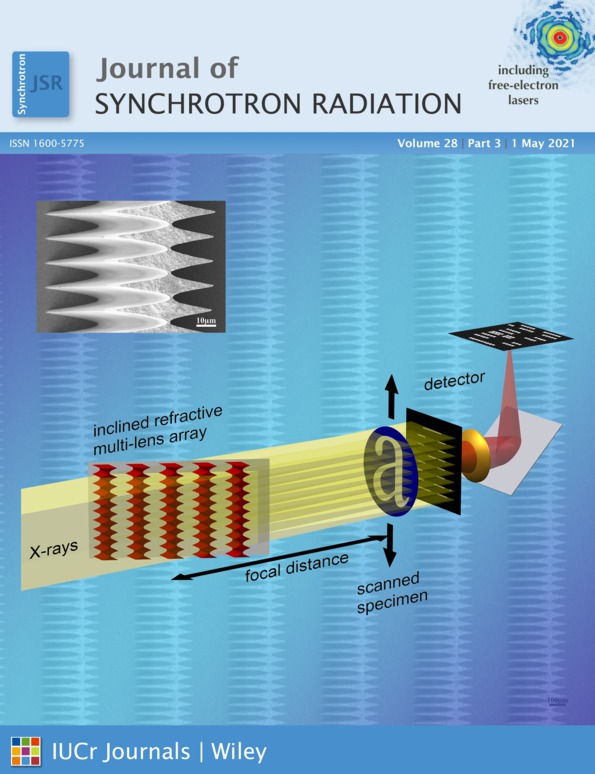A refraction correction for buried interfaces applied to in situ grazing-incidence X-ray diffraction studies on Pd electrodes
Abstract
In situ characterization of electrochemical systems can provide deep insights into the structure of electrodes under applied potential. Grazing-incidence X-ray diffraction (GIXRD) is a particularly valuable tool owing to its ability to characterize the near-surface structure of electrodes through a layer of electrolyte, which is of paramount importance in surface-mediated processes such as catalysis and adsorption. Corrections for the refraction that occurs as an X-ray passes through an interface have been derived for a vacuum–material interface. In this work, a more general form of the refraction correction was developed which can be applied to buried interfaces, including liquid–solid interfaces. The correction is largest at incidence angles near the critical angle for the interface and decreases at angles larger and smaller than the critical angle. Effective optical constants are also introduced which can be used to calculate the critical angle for total external reflection at the interface. This correction is applied to GIXRD measurements of an aqueous electrolyte–Pd interface, demonstrating that the correction allows for the comparison of GIXRD measurements at multiple incidence angles. This work improves quantitative analysis of d-spacing values from GIXRD measurements of liquid–solid systems, facilitating the connection between electrochemical behavior and structure under in situ conditions.




